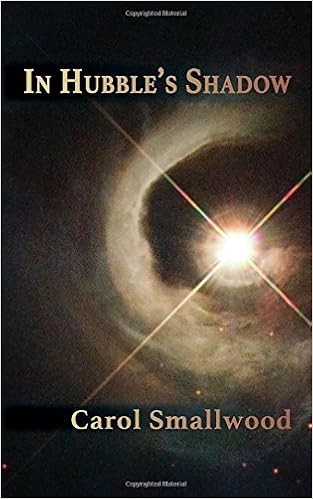 In Hubble’s Shadow
In Hubble’s Shadowhttps://www.amazon.com/
Review by Jennifer L. Dean
T
he early 90s were exciting and troubling times—the Berlin wall came down, and the Iraq War began. A Gen Xer, this was the backdrop for my first year of college. When the Hubble Telescope launched into space in early 1990, sending us brilliant images of a world we had heretofore only imagined, it surprised and delighted us, showing us just how small we were. For me, these bright photographs helped to offset the images of the loss of the Challenger, a loss many in my generation still remember as one of our first shared tragedies.
In Hubble’s Shadow, a collection of poems by Carol Smallwood, evoked this rush of memories for this reader, simply with its title. These memories were not the only ones that flooded my senses as I read Smallwood’s poetry. I delighted in scenes seemingly inspired from my own rural upbringing—from an exploration of spring’s arrival in the changing landscape of a dirt road in the brief “An Ode to Mud,” or the remembrance of summer’s bounty in the even briefer “The Sugar Beet Field.” These poems delight the senses and inspire wonder and laughter. But, darker images reside here, too. Faithless friends and partners in “Dreams of Flying Sestina,” and health concerns in “Live with It” and “Kitty Doesn’t Explore” rear their heads, weaving their way into this tapestry of a life lived in contemplation of our world’s complexity, whether underfoot, overhead, or right in front of us.
Taken as a whole, this collection reflects the full round of life, with all of its questions, beauty, and pain. This volume is accessible to all readers, no matter their knowledge of poetry and poetic devices. Although this collection includes several longer-form works, the majority pull you in with their brevity and knock you out with their depth of feeling and the poet’s ability to bring the reader right to the heart of the story. This collection meets the reader where they are, with just enough detail to inspire the wonder with which the author so clearly perceives the world and her place in it. Or, as Smallwood writes so eloquently in the last line of “Wind in Trees”—“the story lies with the interpreter.”
Recent Comments